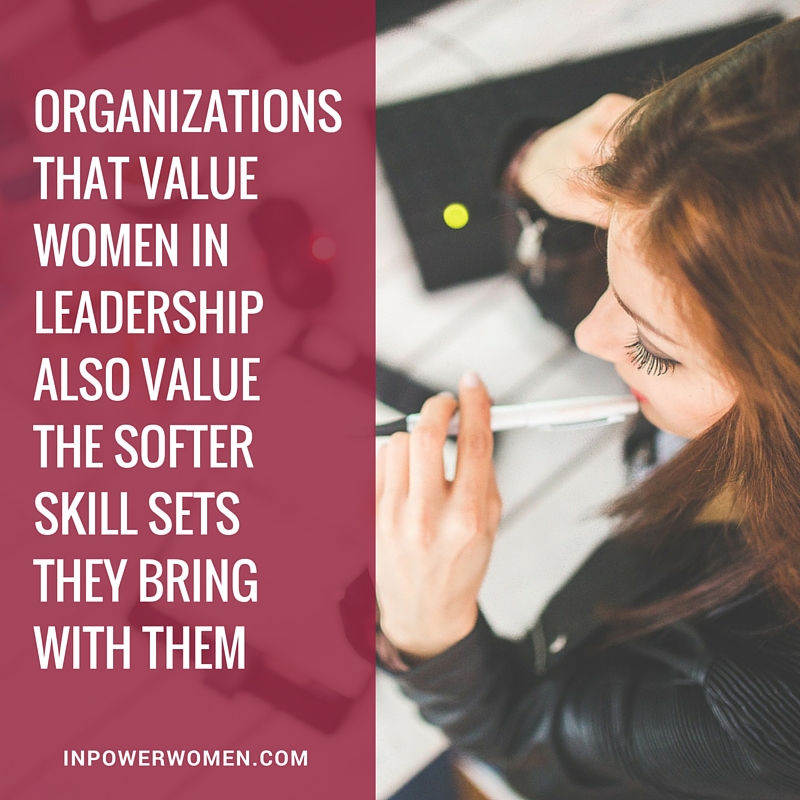Our economy needs women in leadership. When women are more than tokens in leadership – representing over 30 percent of the team in diverse business specialties – their organizations perform demonstrably better. Not only are women naturally good leaders, showing the capacity to balance their leadership styles to achieve results even more adeptly than men at times, but they are hard workers and driven to succeed as executives as well.
But we all know the sad stats: women occupy only 15.2 percent of Fortune 500 Board seats and even fewer CEO and top team leadership slots.
How do we help more women make it into leadership? The short answer: Don’t “train women” in leadership.
Women Don’t Need Special Help
If there’s anything the data tells us about women in business these days, it’s that women are really good leaders and have all the skills they need to succeed in business. A recent article in the Harvard Business Review found that women outscored men on 15 of 16 leadership competencies. In addition, women are hard workers and results-focused and we’re good investors too.
Of course, women aren’t the same as men and we operate in cultural realities that can confuse us – and the men we work with – about our capabilities. This is pointed out by data that identifies areas we can focus on to get ahead such as learning to speak up and be noticed, negotiate and ask for higher salaries and communicate more effectively and authentically. But men can benefit from these skills just as much as we can. Why do we think these are “women’s issues”?
We think that because the data divides us. For a long time research was trying to figure out who was right, the feminists who said women were as good as men or the sexists who said we weren’t. That debate is over. Gone. Done. We know the answer is YES, women and men are both smart and capable, and much of the research about the differences between women’s and men’s brains is over-blown.
Of course women still benefit from talking to and supporting other women in the workplace, but let them do that over coffee. Don’t spend your corporate resources segregating them from the men who hold the other half of the keys to success. Bring them together to learn together how to run powerful organizations.
Time to move on, but to what?
Training Leaders in Gendership
When we review the plethora of research on women and business with a critical eye, we begin to see a pattern: Organizations that value women in leadership also value the softer skill sets women bring with them – regardless of the sex of the leader her- or himself. This is a chicken and egg question and it doesn’t matter which came first the women or the culture. The point is that business cultures that value both the soft and hard leadership skills perform better! Men who have soft skills and women who have hard skills can both excel. If we help build cultures that do this well, we’ll reap the benefits from women and men who’ve long been excluded as they are welcomed into leadership more openly.
But you may already know this. You may even have been working to help people develop balanced leadership styles for a long time, but found it tough to get the guys running the company to buy into “empathy training,” much less change their chest-bumping competitive behavior in the boardroom.
Here’s where the women can help you. When women and men start leading together, they naturally tend to modify each other’s behavior and bring out the best in each other; men are more polite and women are more focused. Working in a group they even make the group smarter. In many of the teamwork trainings I do, I’m surprised that just as often as I see the “typical” team configurations of command-and-control guys partnered with consensus-oriented gals, I find reverse configurations as well. When I do an exercise to help them “find their comfort zone,” invariably there are as many men as women on the “collaboration” and the “authoritarian” ends of the spectrum. Don’t segregate the men and women in training. Putting them all together and giving them techniques to learn from and value each other is the best way to help women and men learn to build Gendership – the natural partnership that women and men manage together – into the culture.
Here are some specific areas that help women and men – and Gendership teams – internalize and work on the gender-balanced skills everyone needs to develop:
- Interpersonal communications effectiveness;
- Matching leadership styles appropriately to leadership challenges;
- Conflict management and resolution; and
- Negotiation.
It’s the Culture
Of course, there is more to creating and maintaining healthy cultures that welcome women into leadership than just running folks through some training exercises. Culture-making is a subtle art, but it can be done by benchmarking your culture with research and developing strategies that involve an intentional combination of leadership focus, grassroots innovation, cultural identity management, change management, leadership action learning and communications strategies.
If your organization is offering “women’s leadership” courses, you can contribute to the culture shift by shutting them down and integrating the women into training designed to let them interact naturally with the men. If you’ve already shut down the “ladies only” offerings, look at how your training program can intentionally build in opportunities to put women and men together to learn how to lead – together.
This post was originally published on Training Industry
Check out the resources in the InPower Coaching EQ at Work and Soft Skills Research Index.
Guide to Women in Leadership
Organizations with women in their executive suites regularly out-perform others. Yet rising female executives (and their mentors) are frustrated at how hard it is to break through the glass ceiling. In this extensive guide, Executive Coach Dana Theus shares her tried and true strategies to help women excel into higher levels of leadership and achieve their executive potential.







